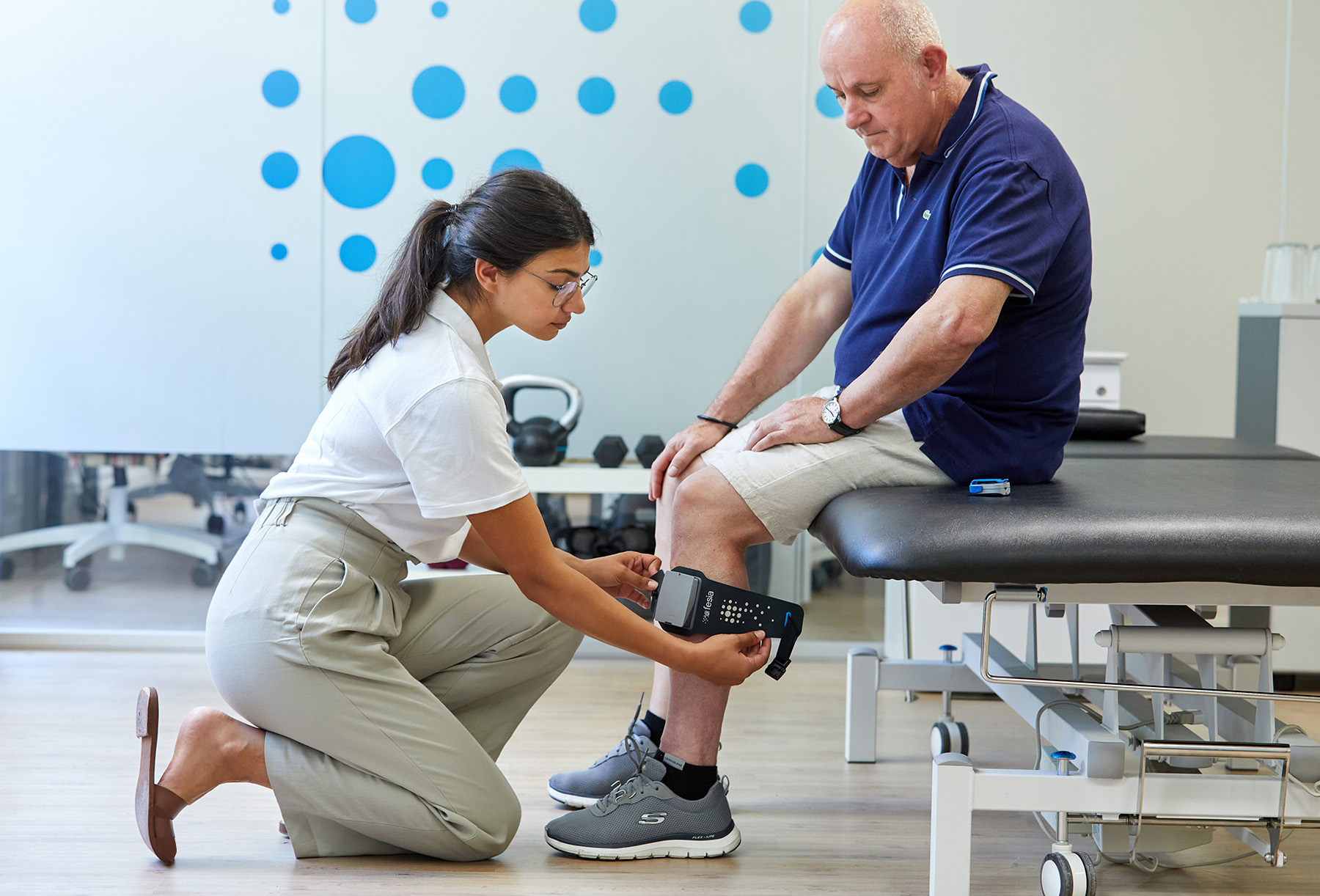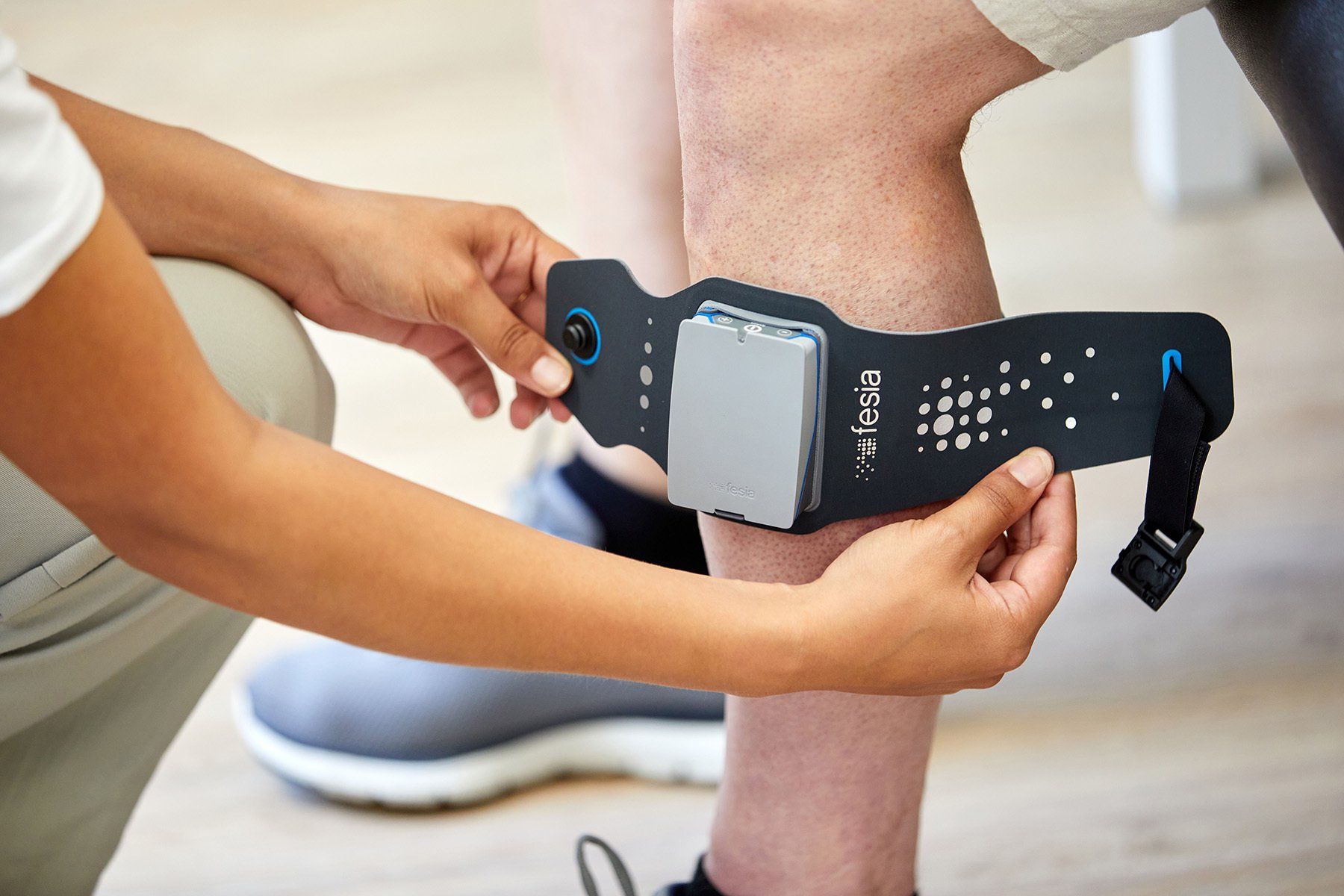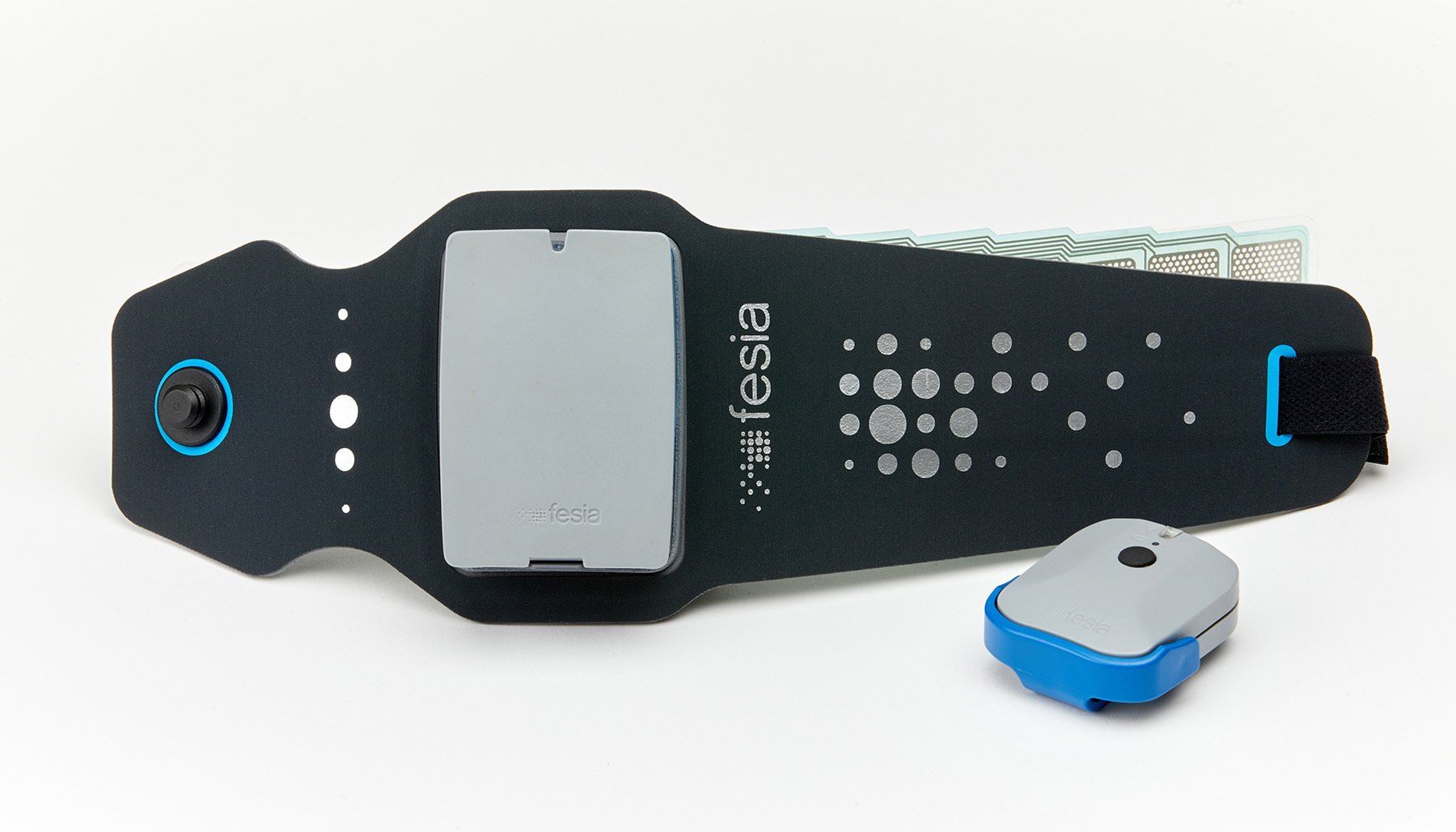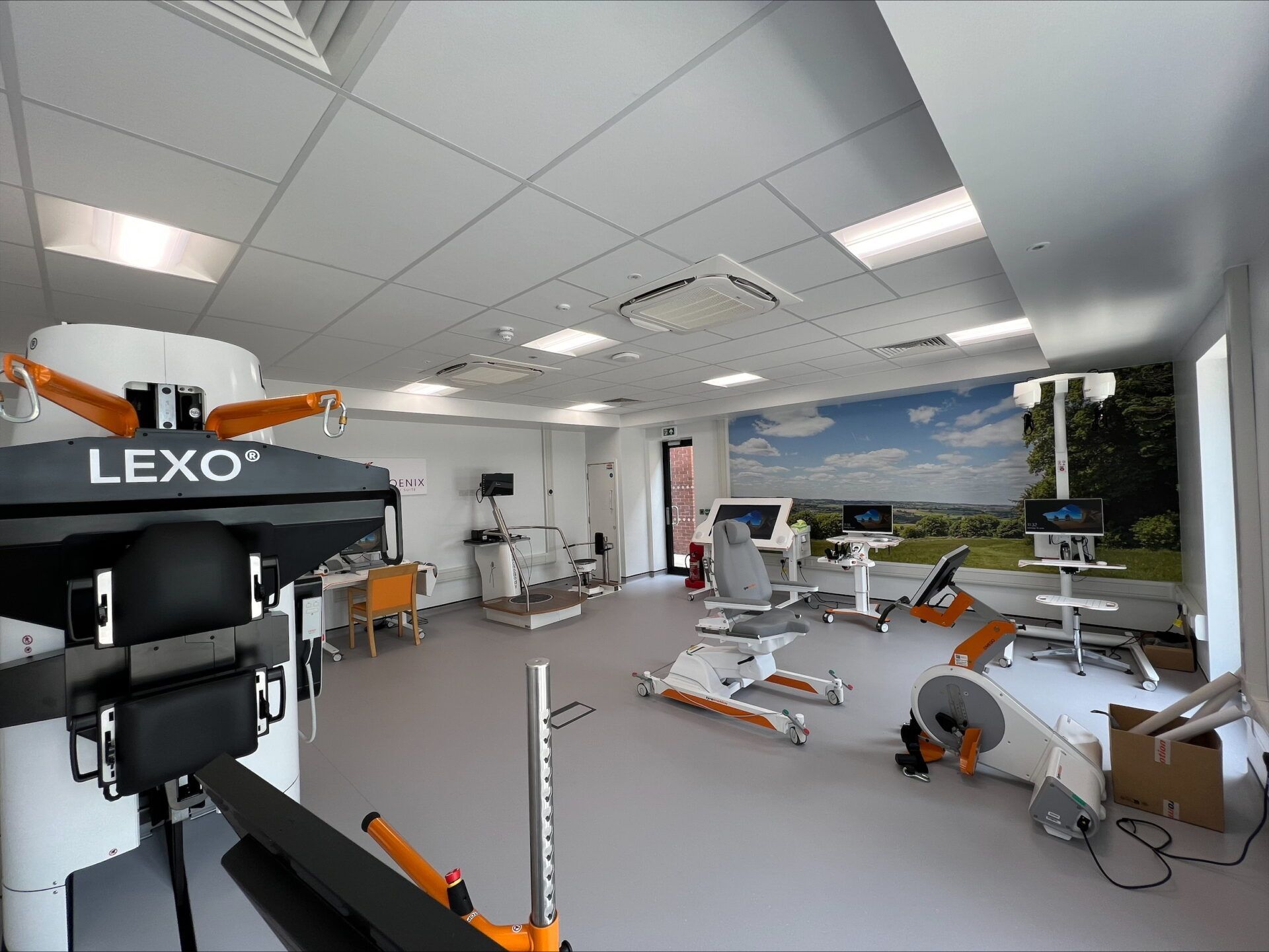Fesia WalkThe latest generation of Functional Electrical Stimulation (FES) gait rehabilitation system
FAQS
1. Functional electrical stimulation (FES)
1.1 What is Functional electrical stimulation (FES)
Neurological illness or injury often affect, in one way or another, the capacity of motor control or, in severe cases, the complete absence of muscular function; but the nerve conductivity and the excitability of the muscles remain. Functional electrical stimulation (FES) uses electrical current to activate the nerves and, as a result, activate the muscle. Fesia technology enhances the capacity of this technology by applying it to multipad electrodes.
1.2 What are the main benefits of FES
The main benefits of FES are:
- Prevents muscle atrophy
- Pain reduction
- Increases strength and functional improvement
- Spasticity reduction
- Increases local blood flow
- Reinforcement of motor re-learning and neuroplasticity
- Maintenance/increase of range of motion
1.3 Is there any evidence of the effectiveness of FES?
There are multiple scientific publications that support the use of FES. Please email: enquiries@ectron.co.uk
and we can share these with you.
1.4. Are there any contraindications for the use of FES?
There are some situations where FES is contraindicated:
- People with cardiac pacemakers or other electrical or metallic implants, unless recommended by a physician.
- People with severe epilepsy or a recent history of frequent seizures.
- Tumors or cancerous lesions in the area where electrical stimulation is applied.
2. Fesia Walk
2.1 What is the Fesia Walk Device
Fesia Walk is a functional electrical stimulation (FES) based gait rehabilitation device, for people who suffered from foot drop as a result of a disease or injury of the central nervous system.
2.2 Who is suitable for Fesia Walk
Fesia Walk is a device for people who live with drop foot as a result of:
- Stroke
- Multiple Sclerosis
- Spinal Cord Injuries
- Traumatic Brain Injury
- Cerebral Palsy
- Other injuries of central or peripheral nervous system.
2.3. When should you start to use the Fesia Walk
It has been scientifically proven that the sooner rehabilitation begins, the better results are obtained.
In addition, with “Habituation / exercise” protocols, people without sufficient balance or strength for walking or must even still in bed, can start using the device. So ideally Fesia Walk should be started from acute phases.
2.4. What is a multi-pad electrode?
One of the key features of Fesia Walk system is the multi-pad electrode. The multi-pad electrode combined with an extremely easy-to-use interface allows any user, therapist or patient to try many different electrode sizes and positions without the need of removing the electrode from the skin.
Using a multi-pad electrode, Fesia Walk produces more selective activation of desired muscles. This way our products have better functional performance and muscle fatigue is reduced.
2.5 Is the placement of Fesia Walk a long process?
The placement of Fesia Walk takes a few seconds.
2.6 How is Fesia Walk placed?
The following instructions must be followed:
- Clean and dry the skin before electrode placement for optimal adhesion. The skin must be cleaned of cream and oil residues before applying the electrode. If the area where the electrode is going to be placed has a lot of hair, it is advisable to shave the area for hygienic reasons and to ensure proper stimulation.
- Carefully remove the electrode gel protective layer. Keep this protective layer as you will need it to store it at the end of its use. This layer protects the gel from dirt and dust.
- Place the reference of central axis of the garment two or three centimeters below the patella.
- Close the garment using the magnetic fastener and adjust it to suit.
- Insert the stimulator into the base of the electrode. Push until it clicks and make sure it is properly inserted.
- Place the sensor in the shoe by inserting the collet of the sensor between the laces or velcro of the shoe.
The placement of Fesia Walk will be explained in a film to follow shortly
2.7 How often should the electrodes be replaced?
The electrode is a disposable item that should be replaced at least every 15 days of daily use or every 10-15 sessions. However, it must be replaced if any defect or anomaly is observed.
2.8 Does Fesia Walk need any maintenance?
The Fesia Walk system does not require maintenance, but be cautious in handling to avoid damage from unexpected drops or falls. Do not attempt to repair the Fesia Walk or open the stimulator under any circumstances. In case of breakdown contact a Fesia technician.
Although it is recommended to change the electrode at least after 15 days of daily use or when any defect or anomaly is noticed, the electrode may sometimes appear dry or lose its adhesion properties during this time. In that case, once the protective plastic has been removed, pour about 10 drops of water on it and spread this water over the entire gel with the fingers. Wait 3-4 minutes until the gel has absorbed the water. The electrode is personal, it should not be used by different people.
You can clean the stimulator and sensor housings using a clean, soft cloth. You can wash the textile garment with soap and water after removing the electrode from the band.
Store the Fesia Walk properly after each use to prolong its life:
- Turn off the stimulator and the sensor.
- Replace the protective plastics on the electrode gel.
- Store the system in a place protected from moisture, dust and direct sunlight.







